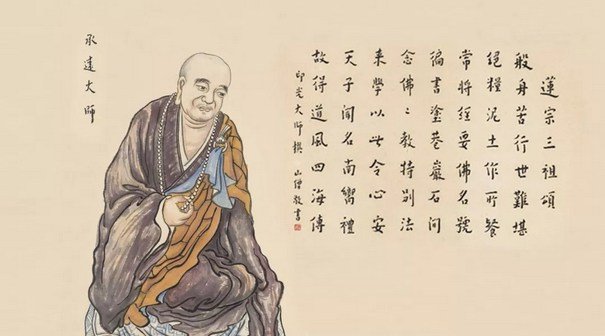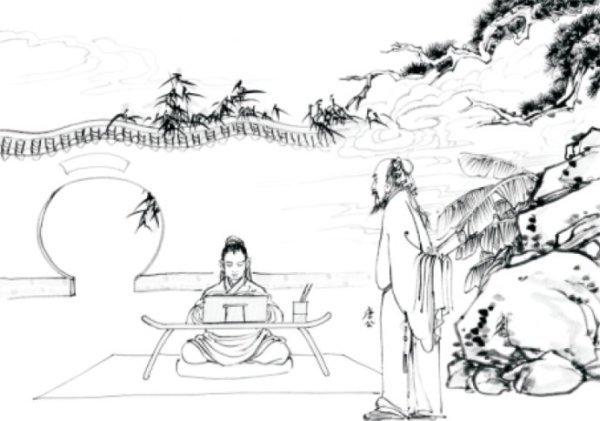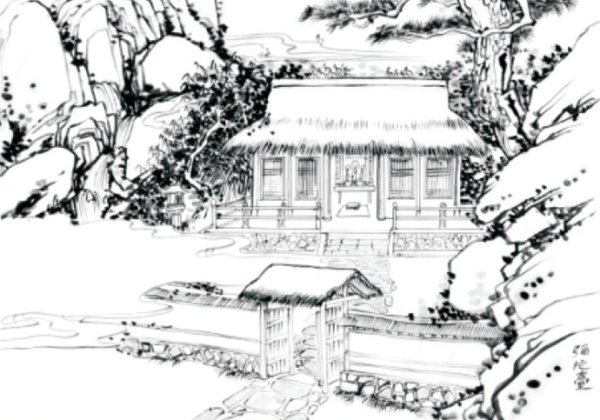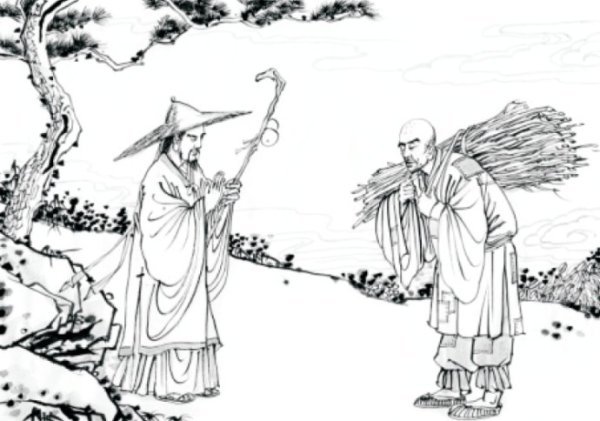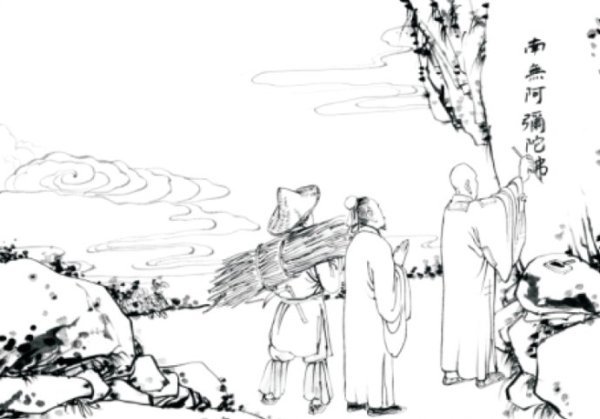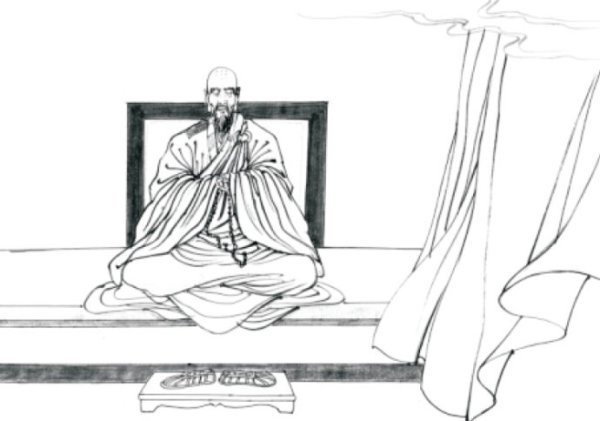3rd Patriarch Great Master Chengyuan 三祖承远大师
Great Master Chengyuan was born in 712 C.E, to a Xie family in Hanzhou (now Mianzhu County in Sichuan Province). As he had good and sharp spiritual roots from his past lives, he possessed innate talents and was highly intelligent. When young, although he received Confucian education on rites, music and the Book Of Songs (Classic On Poetry), he saw them to be restrictive. Instead, after hearing the Buddha's teachings, he gave rose to great rejoice, resulting in a change of his ideology.
The Great Master realised that with sincere learning of Buddhist doctrine, it can explain and resolve all problems and troubles. As such, he became motivated to go forth, with his determined decision to seek teachers to learn the Buddhist teachings. Following farewell to his parents, he entered a monastery to do miscellaneous work while learning the Buddha's teachings. He thus embarked on the path of cultivating and propagating the Dharma.
Receiving Chan Master Chuji's (648-734 C.E) appreciation, from him, the Great Master learnt Chan practice. After more than a year of his guidance, Great Master was able to 'catch a glimpse of the profound purpose, by intimate awakening to the true vehicle'. Nevertheless, at that time, he had yet renounced the household life.
After that, the Great Master travelled around to learn. At Jingzhou's Yuquan Monastery, the Great Master renounced the household life through Chan Master Huizhen. He received the full monastic precepts through Nanyue's Great Master Tongxiang, with whom he learned the sutras and precepts. Later, after knowing Tripitaka Master Cimin had reached Guangzhou to propagate the Dharma, he thereupon overcame one obstacle after another, to seek the Dharma through him.
Tripitaka Master Cimin saw that the Great Master was utmost sincere and earnest in learning the Dharma, and was also extraordinarily intelligent. However, Tripitaka Master Cimin believed that teaching should not solely be for one's own good. There should be reliance on the Sutra On Immeasurable Life to cultivate Samadhi From Mindfulness Of Buddha, for saving and helping all sentient beings. Ever since the teaching was received, the Great Master focused on cultivation of the Pure Land path.
At the age of 30 (742 C.E.), Great Master built a hut at Southwest Hengshan, naming it Amitabha Terrace, in which he then placed an Amitabha Buddha statue and the Sutra Of Immeasurable Life. Striving diligently to cultivate the path, he ate food that was offered to him, and if no one offered any, he would eat wild fruits, flowers and plants. He did not seek fine clothing, and only wore clothes to cover his body from the cold. He was able to let go of the ten thousand worldly conditions, to diligently practise mindfulness of Buddha, and attain Samadhi From Mindfulness Of Buddha, often connecting to see the holy environment of Amitabha Buddha's Pure Land before his eyes.
Great Master taught and transformed people to be well established on the Middle Path. For enabling them to swiftly realize the fruit of the path to Buddhahood, he ardently preached the Dharma Door of Mindfulness of Buddha. He also wrote sutra quotes, Dharma sayings and Amitabha Buddha's name on the walls of big streets and small lanes, carving them on mountains, cliffs and valleys. He gave earnest and well-meaning advice, to encourage many to seek rebirth in Pure Land.
Those who accordingly learnt the Dharma to practise mindfulness of Buddha gradually increased to be many. Many devotees saw that the dwelling place of Great Master was old and shabby, his clothes to be coarse, and that he ate poor food. Aspiring to construct a hall, they took upon themselves to offer cloth and cotton, cut wood, pile rocks, and set up tents to stay. The Great Master neither rejected nor sought these to be done. When the hall was completed, it was thereafter named Amitabha Monastery.
At that time, Great Master Fazhao (later known as the Fourth Patriarch Of The Pure Land Tradition) was at Mount Lu. One day, while in samadhi, he arrived at the Land of Ultimate Bliss, and saw a monk in tattered robes, standing by the Buddha. Upon enquiry, he knew him to be Nanyue's Great Master Chengyuan. After exiting from samadhi, Great Master Fazhao immediately went to Mount Heng to meet Great Master Chengyuan. With joyful tears, he inherited the Pure Land teachings from him.
When Emperor Daizong decreed Great Master Fazhao as the State Preceptor (Nation's Spiritual Advisor), and having heard him speak of Great Master Chengyuan's utmost virtues, he also felt great reverence for him, thus conferring the name Pratyutpanna Bodhimanda (Practice Centre) to the monastery that the great master was staying in.
The Great Master resided at Nanyue for 60 years, and never exited the monastery's mountain gate. Yet, he was able to propagate the Pure Land teachings far and wide. The Great Master devoted his entire life to practising mindfulness of Buddha, and did not attempt to create any written works. Since no works have been handed down, there is no way to study his Pure Land ideology. However, from what is known of his experience of cultivating the path, it seems that he bore in mind Tripitaka Master Cimin's teachings, of strictly upholding practice of the precepts, with focus on cultivation of Pratyutpanna Samadhi. With these benefiting one and all, being a distinctive role model, he was accomplished as a great Patriarch of his generation.
At the age of 91 (802 C.E.), on the 19th day of the 7th lunar month, the Great Master knew that his affinity with the world was coming to an end. He thus gathered all his disciples in the monastery to formally instruct them. With his room cleaned, sitting in the lotus posture and facing West, he peacefully departed for Pure Land. The Great Master, with his lifelong efforts of self-cultivation, proved that mindfulness of Buddha can lead to rebirth in Pure Land. Furthermore, with exemplary ascetic practice, which most ordinary people would find difficult to strive towards, he was able to receive and inspire the masses, to practise and reach Pure Land together. As these contributions, in the history of the Pure Land Tradition, have extremely far-reaching influence, the Great Master is honoured by later generations as the Third Patriarch Of The Pure Land Tradition.

